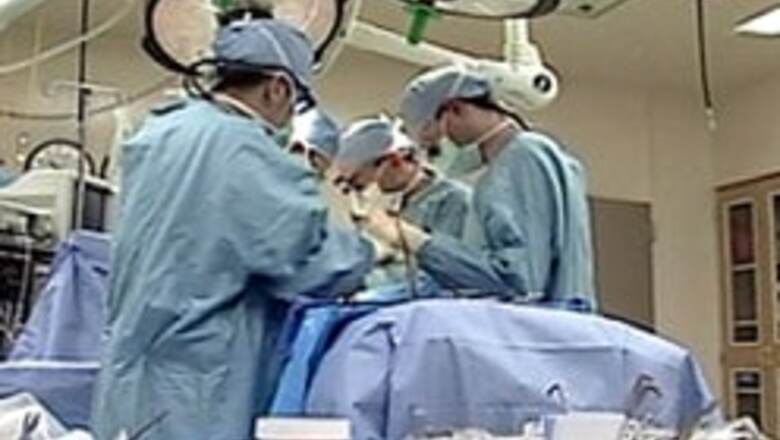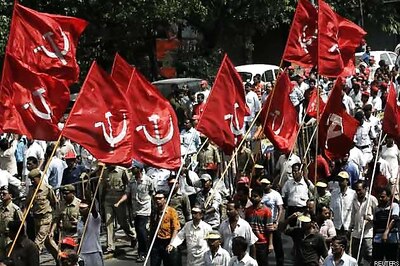
views
Mississippi: It took primitive conditions at a government hospital to end Dr Minerva Rasalan's dream of helping the poor in her native Philippines and send her on a mission toward permanent residency and practice in the United States.
During her time at the underfunded hospital, she found pregnant women assigned two to a cot, patients lining the halls and gloves and needles being sterilized for reuse. Without respirators, relatives sometimes were forced to manually bag their loved ones to keep them alive.
''It's sad, especially for the pediatric patients who we know how to treat their diseases and most of these are infectious diseases,'' said Rasalan. ''We know what antibiotics to use, but we don't have them. So, then we lose the patient.''
Rasalan is among thousands of foreign-born doctors working across the US under special visas that allow them to practice in underserved rural and inner-city areas with the promise of eventual permanent residency. But critics argue the so-called ''brain drain'' of doctors leaving for work in the US has further strained already faltering health care systems in the developing world.
Dr Fitzhugh Mullan of George Washington University believes the US, which is facing a shortage of doctors, must stop looking elsewhere to fix its problems. He compares the practice to ''poaching'' and said it amounts to poor citizenship in the world community.
Every doctor drawn to the US, Britain, Australia and Canada from poorer nations leaves a hole that likely will not be filled, he said.
Mullan's research shows that areas such as sub-Saharan Africa (13.9 percent), the Indian subcontinent (10.7 percent) and the Caribbean (8.4 percent) lose large numbers of doctors to the big four nations. But there is little reciprocation. The US exports less than one-tenth of 1 percent of its doctors abroad, for example.
PAGE_BREAK
''That creates enormous problems for the (source) country and for the educational and health leaders in the country who are attempting to provide healers,'' he said.
While it is unclear what effect the arrest of the foreign doctors allegedly involved in a recent attempted terrorist attack in Great Britain will have on the ongoing exodus of physicians from developing nations, there is no question why doctors in developing countries are searching for opportunity elsewhere, even in the rural US.
While many American doctors shy away from these areas, they have a strong allure for foreign doctors seeking a better life and professional fulfillment.
Like Dr Sanje Chaube, an Indian emigre who now works in coastal Bay St Louis, Mississippi, under the J-1 visa waiver program, they often find needy clientele simply waiting for a doctor.
''I've had a very rewarding experience,'' Chaube said. ''My patients love me. This is the kind of patient population that I wanted to work with.''
But emigration by Chaube and others like him is leaving its mark.
India provides the largest number of foreign-born doctors to work in the four developed nations at about 55,000, Mullan's research shows. About 40,000 of those work in the US. The Philippines come next with about 18,000 doctors exported, mostly to the US.
At least 20 countries export more than 10 percent of their physician work forces to richer nations. Sub-Saharan Africa alone has nine of the top 20 nations contributing émigrés.
Mullan said the U.S. has about 280 doctors per 100,000 people. India has 60. But doctor-poor Ghana has two per 100,000, while Zimbabwe, where junior doctors make about $45 (€32) a week, is down to one.
The loss of doctors in Africa, where millions have been infected with HIV and AIDS, is especially acute.
Dr Kgosi Letlape, president of the South African Medical Association, said doctor migration creates a trickle-up effect, of sorts.
''What goes around comes around,'' he said. ''We are in a continuum. What South Africa loses to the developed world, to the United States say, we gain from Uganda.''
Kenneth Ronquillo, director of the Philippines Department of Health's Bureau of Human Resources, said the shortage of doctors for rural areas of his country might be as steep as 5,000, though there are no concrete numbers.
He said pay seems to be the factor most likely to chase doctors out of the country. An entry-level physician makes about $320 (€231) a month, as much as some U.S. doctors can make in an hour or two.
''When we visit hospitals, we can already see that they lack doctors,'' he said.
''Even in metro Manila, there is a lack of trainees for anesthesia, and the hospitals already advertise for their needs. In the past, applicants would queue at the Philippine General Hospital.''
Rasalan has few regrets over coming to America. In addition to good pay and a happy situation for her family, she gets to practice a subspecialty that allows her to work with premature babies.
Her life would have been very different had she stayed in the Philippines.
“Had I done my training back home, I would still be living with my mom,” she said. ''She would still be supporting me. They pay nothing there as a resident. You're tired, you work like 48-hour shifts and they don't pay you much. I don't want to be a burden to my mom.”




















Comments
0 comment